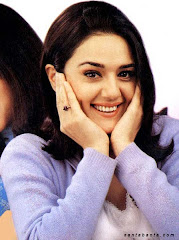The opening ceremony held in the Beijing National Stadium. It began at 8:00 pm China Standard Time (UTC+8) on August 8, 2008.[57][58][59] The number 8 is associated with prosperity and confidence in Chinese culture, and here it was a triple eight for the date and one extra for time (close to 08:08:08 pm).[60] The ceremony was co-directed by Chinese filmmaker Zhang Yimou and Chinese choreographer Zhang Jigang.[61] It featured a cast of over 15,000 performers, and was dubbed beforehand as "the most spectacular Olympics Opening Ceremony ever produced".[62]
A rich assembly of ancient Chinese art and culture dominated the ceremony. It opened with the beating of Fou drums for the countdown. Subsequently, a giant scroll was unveiled and became the show's centerpiece. The official song of the 2008 Olympics, titled You and Me, was performed by Britain's Sarah Brightman and China's Liu Huan, on a large spinning rendition of the globe.[63] The last recipient in the Olympic Torch relay, former Chinese gymnast Li Ning ignited the cauldron, after being suspended into the air by wires and completing a lap of the National Stadium at Stadium roof height in the air.
The entry parade of the competing athletes differed in order from previous Olympic ceremonies, as the national teams did not enter in alphabetical order by the host nation's alphabet. Since Chinese does not have an alphabet, teams entered the stadium in order (lowest first) of the number of strokes in their Simplified Chinese character transcriptions; this is a common collation method for the Chinese language, such as the surname stroke order system. As a result, Australia (normally one of the first teams to enter the stadium) became one of the final teams to arrive, as the first character of the Chinese name of Australia (澳大利亚) has 16 strokes. The Olympic traditions of Greece entering first and the host nation (China) entering last were still observed.
The opening ceremony was lauded by spectators and various international presses as spectacular and spellbinding.[64] Hein Verbruggen, chairman of the IOC Coordination Commission for the XXIX Olympiad, called the ceremony "a grand, unprecedented success."[65] A review of the opening ceremony from around the world called it "spectacular and devoid of politics".[66] It was deemed that the real fireworks were too dangerous to film from a helicopter; as such, some footage were generated to provide simulated aerial shots of the scene. Another cosmetic enhancement in China's quest for a "perfect" Summer Games was using 9-year-old Lin Miaoke to lip-sync over the singing voice of Yang Peiyi for the opening ceremony song Ode to the Motherland. Miss Yang, 7, had reportedly won a "grueling" competition to be chosen as the performer, but was considered to be insufficiently photogenic, and a member of the Politburo who oversaw the final preparations ordered that Miss Lin appear in Miss Yang's place. [67] Another portion of the ceremony featured 56 children carrying a large Chinese flag, with 55 of them dressed in traditional costumes of the ethnic minorities of China. The children wearing the ethnic minority costumes were described in the official program as members of these minorities, but it was later revealed that they were actually Han Chinese. [68]
More than 100 sovereigns, heads of state and heads of government as well as 170 Ministers of Sport attended the Beijing Olympic Games.[69]













